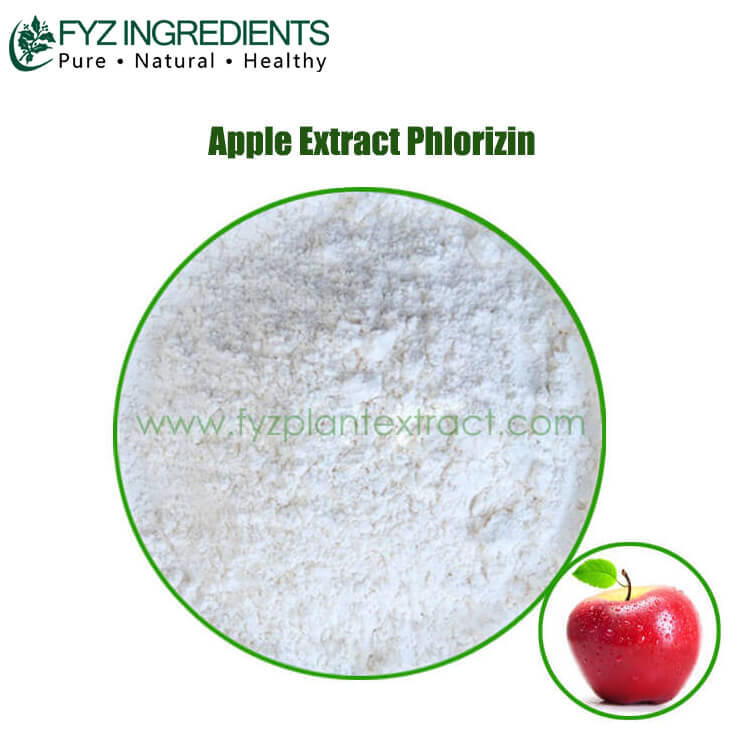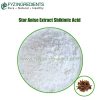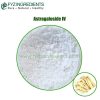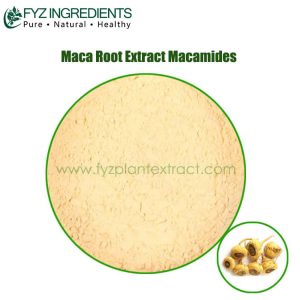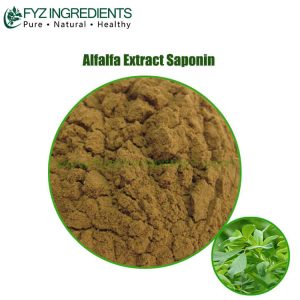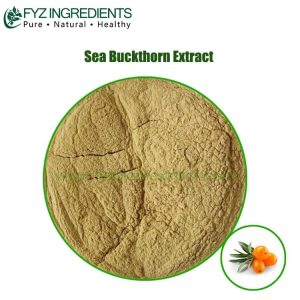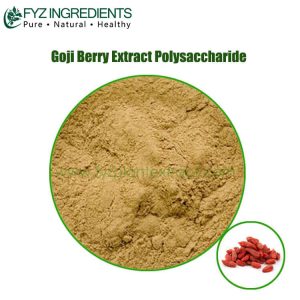What Is Apple Extract?
Apple is the fruit from an apple tree. People eat apples as a normal part of the diet, but apples are also used as medicine.
Apples are used to control diarrhea or constipation; and for the softening, passage, and collection of gallstones. They are also used to prevent cancer, especially lung cancer. Other uses include treating cancer, diabetes, dysentery, fever, heart problems, warts, and a vitamin C-deficiency condition called scurvy. Some people also use apples for cleaning their teeth.
Chemical Constituents of Apple Extract
Apples contain high levels of polyphenols (up to 2 g/kg fresh weight) and other phytochemicals, many of which are strong antioxidants. When compared with many other commonly consumed fruits in the United States, apples had the second highest level of antioxidant activity, were ranked second for total phenolic compounds, and had the highest portion of free phenolics.
Apple extract polyphenols represent 0.01% to 1% of the fresh fruit weight. In particular, apples contain large amounts of flavonoids. Chromatographic analysis reveals that flava-3-nols (eg, catechin, procyanidins) are the major class of apple polyphenols (71% to 90%; 50 to 393 mg/L in juice/cider and 116 to 411 mg/kg fresh fruit weight), followed by hydroxycinnamates (eg, chlorogenic acid, caffeic acid, cumaroylquinic acid; 4% to 18%; 57 to 593 mg/L in juice/cider, 45 to 384 mg/kg fresh fruit weight), flavonols (eg, quercetin conjugates; 1% to 11%; 0.4 to 27 mg/L in juice/cider, 34 to 83 mg/kg fresh fruit weight), dihydrochalcones (eg, phloretins, phloridzins; 2% to 6%; 10 to 171 mg/L in juice/cider, 20 to 144 mg/kg fresh fruit weight), and anthrocyanins in red apples (1% to 3%; 0 to 37 mg/kg fresh fruit weight).
Triterpenoids and quercetin conjugates are found exclusively in the peel, along with much higher concentrations of procyanidins, catechin, epicatechin, and phloridzin. Anywhere from 2 to 6 times more phenolics and 2 to 3 times more flavonoids are found in the peel than in the flesh. However, higher amounts of chlorogenic acid are in the flesh than in the peel. Consequently, apple peels have much greater antioxidant activity and antiproliferative activity than the flesh.
Vitamin C in apples contributes less than 0.4% of the total antioxidant activity.
Notably, there are differences in the polyphenol content between apple cultivars.
Harvest, storage, and processing also have an effect.
The fruit contains up to 17% pectin and pectic acids.
Hydrogen cyanide, liberated from the cyanogenic glycoside amygdalin, is found in the seeds. In addition, the seeds contain a yellow semi-drying oil (glucoside phlorizin) with the odor of bitter almonds.
Apple leaves, bark, and root contain phloretin, an antibacterial substance that is active in vitro in low concentrations.
Beneifts of Apple Extract
Besides supplying key nutrients, several lines of evidence suggest that apples and apple products possess a wide range of biological activities that may contribute to beneficial health effects. Increasing evidence from in vitro, in vivo, and epidemiological studies suggest that flavonoids found in apples may be protective against cancer, cardiovascular disease, diabetes, asthma, obesity, and other chronic diseases.
It has been reported that of all the flavonoid sources, apple intake was inversely associated with the occurrence of all cancers combined (especially lung cancer), asthma, type 2 diabetes, thrombotic stroke, total mortality, and ischemic heart disease. In addition, flavonoid intake was associated with a lower mortality; apples were one of the main dietary sources that showed the strongest association with decreased mortality.
1. Mechanism of action
Beneficial health effects can be attributed to the phytochemicals and dietary fiber found in apples. Apples are low in calories, fat, and sodium, which are all positive contributors to cardiovascular health.
Raw apples are a good source of dietary fiber. Apples contain soluble and insoluble fiber, two-thirds of which are found in the peel. Soluble fiber, such as pectin, helps lower cholesterol levels and normalize blood glucose and insulin levels. Pectin has also been used to treat diarrhea. (For further information, see the Pectin monograph.) Insoluble fiber promotes bowel regularity and helps move food quickly through the digestive tract; it is therefore effective in the treatment of constipation, diverticulosis, and some types of cancer.
The phytochemicals in apples possess strong antioxidant activity. It is this antioxidant activity, along with the effects of the fiber content, that influence multiple mechanisms relevant for cancer prevention and cardiovascular protection. In cancer prevention, these include antimutagenic activity, modulation of carcinogen metabolism, antioxidant activity, anti-inflammatory mechanisms, modulation of signal transduction pathways, antiproliferative activity, and apotosis-inducing activity. In cardiovascular protection, it is likely that the relevant mechanisms include decreasing lipid oxidation, lowering cholesterol, improving blood glucose and lipid profiles, reducing risk of type 2 diabetes, and beneficial effects on obesity.
One study compared 8,029 patients with incidences of oral, pharyngeal, esophageal, laryngeal, colorectal, breast, ovarian, and prostate cancer to 6,629 patients without cancer. Consumption of 1 or more apples per day was inversely associated with the risk of cancer when compared with less than 1 apple per day. Similarly, an inverse relationship between apple consumption and the risk of cardiovascular disease has been illustrated in various human studies.
2. Cancer
Numerous in vivo studies in animal cancer models have shown that apple products may inhibit the growth of chemically induced mouse skin papillomas ; chemically induced rat mammary carcinogenesis ; liver, lung, and lymphatic metastases induced by hepatoma cell inoculation in rats ; and melanoma cells in host mice transplanted with B16 cells. Studies have shown the potentially important role of oligomeric procyanidins in colon cancer prevention. Similarly, numerous studies have shown a beneficial effect of apple-derived dietary fiber in reducing the ratio of secondary bile acids formed by the bacterial metabolism from primary bile acids synthesized in the liver (regarded as a risk index for colorectal cancer). It has been reported that the combined ingestion of apple pectin and polyphenol-rich fraction was more effective on large intestine fermentations and lipid metabolism than if they were fed separately, suggesting interactions between fiber and polyphenols of apple.
Short-term human intervention studies providing some insight into the potential cancer preventive activity have focused on the modulation of antioxidant status and markers of oxidative stress by consumption of apple and apple juice. However, these studies suggest that apple or apple juice consumption results in only a brief transient increase in antioxidant capacity 0.5 to 3 hours after consumption. In a series of in vitro, ex vivo, and in vivo studies, it was demonstrated that the increase in human plasma antioxidant capacity after apple consumption is not caused by apple-derived antioxidants, but is most likely due to a metabolic effect of fructose contained in apples on urate, an important endogenous antioxidant in plasma.
Evidence indicates that regular consumption of 1 or more apples each day may reduce the risk of colon cancer. In the US Nurses’ Health Study, the cohort of women who ate the most apples had a reduced risk of developing colorectal adenomas when compared with those with the lowest apple intake. A case-control study in Uruguay showed apple consumption was associated with a dose-dependent reduction in colorectal cancer risk in men and women. In a case-control study in Korea, fruit consumption, including apples, lowered the risk for colon cancer in men, but not in women. A recent case-control study from Scotland did not find a statistically significant association between apple consumption and colon cancer risk. In a study from Italy, including 1,953 patients with colorectal cancer, consumption of 1 or more apples per day when compared with less than 1 apple per day significantly reduced the odds ratio (OR) for colorectal cancer (OR = 0.8 [95%, confidence interval (CI) 0.71 to 0.9]). A more recent study showed that adjusted risk of colorectal cancer was reduced by consumption of at least 1 apple per day (OR = 0.65 [95%, CI 0.39 to 1.09]), and that the intake of more than 1 apple per day reduced the risk by approximately 50% (OR = 0.53 [95%, CI 0.35 to 0.79]). Reanalysis of several case-control studies illustrated an inverse relationship between risk of colorectal cancer and the daily number of apple servings; the most significant reductions were observed for an intake of 1 or more apple servings daily (OR = 0.37 [CI 95%, 0.15 to 0.91]).
3. Lung cancer
A 21% reduction in risk of lung cancer among women was observed in the large prospective Nurses’ Health cohort study, but no effect was seen among men in the Health Professionals’ Follow-up study. In a large cohort study from Finland, the risk of lung cancer was reduced by 60% in men who ate the most apples (more than 47 g/day) compared with those who did not eat apples at all. The Zutphen study in elderly men showed apple intake was not associated with reduced lung cancer risk. In a case-control study conducted in Hawaii, a statistically significant inverse relationship between lung cancer and apple consumption was found.
4. Renal cancer
High apple consumption (more than 94 g/day) was associated with a reduced renal cancer risk. The reduction was particularly strong for those people who ate the most apples and for nonsmokers, whereas no effect was seen in smokers.
5. Other cancers
In a study from Italy, meta-analysis revealed consumption of 1 or more apples per day compared with less than 1 apple per day reduced the odds ratio for cancers of the oral cavity, larynx, breast, and ovary.
6. Cardiovascular disease
The effects of apple have been studied in various conditions that are related to cardiovascular disease and its risk factors, (eg, atherosclerosis, hypercholesterolemia, obesity, type 2 diabetes).
7. Atherosclerosis
A study compared the effects of apples, purple grapes, and their juices on hamsters fed an atherogenic diet for 12 weeks. Plasma cholesterol, non–high-density lipoprotein cholesterol, liver superoxide dismutase and glutathione peroxidase activities, and thiobarbuturic acid reactive substances were efficiently reduced by the fruits and their juices compared with controls. Plasma antioxidant capacity was also increased and aortic fatty streak area was decreased. It was concluded that apples, grapes, and their juices prevent the development of atherosclerosis in hamsters and the underlying mechanism is mainly related to increased antioxidant status and improved serum lipid profile.
Another study designed to assess the effect of apple juice on risk factors of atherosclerosis and on the development of atherosclerosis in rabbits fed a high cholesterol diet found that apple juice decreased the risk factors (total cholesterol, triglycerides, C-reactive protein, fibrinogen, and factor VII levels). In addition, there were fewer atherosclerotic lesions (fatty streak formations) in the right and left coronary artery in the apple-fed rabbits. They concluded that apple juice can effectively prevent the progress of atherosclerosis in this model, and it is likely due to its antioxidant and anti-inflammatory effects.
8. Hypercholesterolemia
Various in vivo animal models have found that apple constituents counteracted the development of hypercholesterolemia and/or exerted beneficial hypocholesterolemic effects.
Apples have been shown to lower cholesterol in humans. In a randomized, double-blind, placebo-controlled study on moderately obese men and women with body mass indices (BMIs) ranging from 23 to 30, the 12-week intake of polyphenols from apples and hop bract (600 mg/day) decreased total cholesterol and low-density lipoprotein cholesterol levels. The effect from the apple-containing capsules was more marked than that from the hop bract, demonstrating that apple polyphenols regulate fat metabolism in healthy subjects with high BMIs.
9. Obesity
A study in rats compared the effect of apple polyphenol diets containing 5% and 0.5% with a control group. After a 3-week experimental period, adipose tissue weights in the 5% group were lower than those in the control group. Pathological examination suggested the existence of proliferating pre-adipocytes only in the control group. They concluded that dietary apple polyphenol had an antiadipogenic effect.
Various clinical studies have illustrated that apple polyphenols may regulate fat metabolism. In a study from Brazil, hypercholesterolemic nonsmoking women were randomized to apple, pear, or oat cookies consumed 3 times daily for 12 weeks. Participants consuming either fruit had a significant weight loss. However, those on oat cookies did not.
Diabetes
In a study from Brazil, women consuming apples or pears 3 times daily had a lower blood glucose level when compared with women consuming oat cookies.
1. Epidemiological studies and cardiovascular disease risk
In the Women’s Health study, which surveyed nearly 40,000 women with a 6.9-year follow-up, women ingesting apples had a 13% to 22% decrease in cardiovascular risk.
In a large study in Finland, apple and onion intake was significantly inversely associated with coronary mortality, especially in women. Data collected from the study in Finland also showed that those who had the highest consumption of apples had a lower risk of thrombotic stroke, and apple consumption was associated with a reduced risk of type 2 diabetes. Onion, orange, grapefruit, and cabbage were not associated with a lower risk of diabetes.
In a study of nearly 35,000 postmenopausal women in Iowa, apple and wine consumption was also inversely associated with coronary mortality.
In the Zutphen study in elderly men, apple intake contributed to approximately 10% of the total ingested flavonoids and was associated with a reduced risk of death from coronary heart disease; however, the relationship was not statistically significant.
2. Asthma and pulmonary function
Apple consumption has been inversely linked with asthma and has also been positively associated with general pulmonary health.
A study from the United Kingdom surveying nearly 600 asthmatics and 900 nonasthmatics about diet and lifestyle showed total fruit and vegetable intake was weakly inversely associated with asthma, while apple intake showed a stronger inverse relationship with asthma, particularly in those who consumed at least 2 apples per week. Other foods high in flavonoids, such as tea, red wine, and onion were not related to asthma incidence.
In a large study in Finland involving 10,000 men and women, apple and orange intake were associated with a reduced incidence of asthma, whereas other fruits and vegetables, such as onions, grapefruit, cabbage, and juices, were not associated with a decreased risk in asthma. Similarly, a study in Australia involving 1,600 adults showed apple and pear intake was associated with a decreased risk of asthma and a decrease in bronchial hypersensitivity, whereas total fruit and vegetable intake was not associated with asthma risk or severity.
Flowchart of Production

Package and Shipping
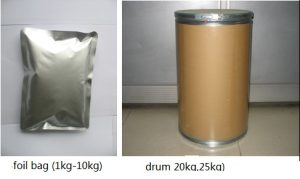
- By Express: Suitable for under 50kg, 5-10 days
- By Air: Suitable for more than 50kg, 7-15 days
- By Sea: Suitable for more than 500kg, 15-45days
Why Choose FYZ Apple Extract Polyphenols Phloretin Phlorizin?
- FYZ is a professional Apple Extract Polyphenols Phloretin Phlorizin manufacturer in China, provides private labels service.
- FREE SAMPLE (5-10g) for detection, if you need more, please contact us.
- Fast delivery by DHL/FedEx, air as your requirement.
- All of our products from nature, no additive.
- Money refund policy.

